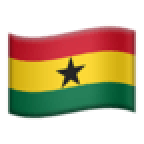The South African activist and his girlfriend had gone to the supermarket to buy stuff but they were confronted by a red-suit-wearing Caucasian manager of the mall who explicitly told them that Thando Mahlangu’s outfit was completely unacceptable because it looked indecent.
A dramatic video shows Thando Mahlangu and his lover arguing with the mall manager in an attempt to understand what he meant by indecent attire.
The adamant manager ordered them to leave the shop despite attempts to make him see reasons with them.
READ ALSO: Court dissolves pastor & pregnant wife’s marriage after he caught her in bed with another man
“You are telling me I’m not supposed to wear African [clothes] in Africa?” Mahlangu is heard asking the mall manager.
“I’m saying this is a public place … I’m not allowing that here, this is my mall … right of admission is reserved,” the man responds.
Mahlangu’s girlfriend can be heard telling the man that “this is Africa then you can’t tell someone what to do, what to wear, at which mall”.
After the incident, Mahlangu took to his Twitter page to share the experience with his followers and it has triggered a lot of reactions.
“Saddest reality in Africa, I was subjected to inside the @Clicks_SA store at The Boulders Shopping Center. By the center manager, who said it was his shopping complex. I was told that I'm wearing inappropriate I must go & Omega risk solutions harassed me,” he wrote to caption the video.
Some of Mahlangu’s followers sympathized with him and condemned the shopping center manager but others too said Mahlangu was wrong to have entered the mall in the attire he wore.


&format=jpeg)
&format=jpeg)
&format=jpeg)
&format=jpeg)